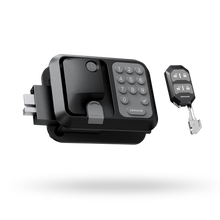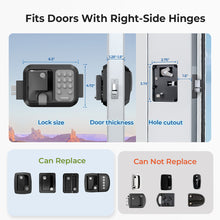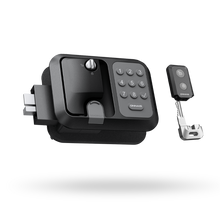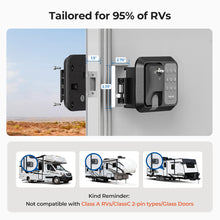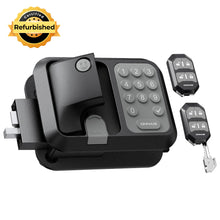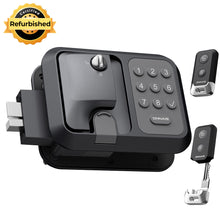RV Safety: Protecting Children and Pets on the Road

There’s nothing quite like the freedom of the open road. The ability to wake up to a new view, to have your home follow you to the foot of a mountain or the edge of the sea, is a magical experience. For families, an RV adventure is the ultimate bonding trip-a chance to disconnect from screens and reconnect with each other.
But with that freedom comes responsibility. Your RV is not just a vehicle; it’s a home on wheels. And just like at home, children and pets face unique safety risks that require preparation and awareness. From sharp corners and unsecured items to temperature control and campsite hazards, a few simple precautions can make all the difference between a happy family trip and a stressful experience.
In this guide, we’ll explore how to create a safe RV environment for both children and pets — keeping everyone protected, comfortable, and free to enjoy the adventure.
1.Understanding the Unique Risks Inside an RV
Think of your RV not just as a vehicle, but as a miniature, constantly moving home. This dynamic nature means that hazards you might easily manage in a stationary house become amplified or manifest differently. Limited space, moving parts, and travel vibrations that can easily lead to accidents. Let’s take a look at the common risks.
For Children:
Unsecured Cabinets and Appliances: Sudden stops or turns can cause objects to fall. Curious little hands may pull on open drawers or doors.
Sharp Edges and Hot Surfaces: Countertops, stove burners, and metal edges can easily cause injury in confined spaces.
Unstable Furniture: Fold-out tables or bunks can pinch fingers or collapse if not locked correctly.
Moving Vehicle Dangers: Children must never move around while the RV is in motion — even a quick turn can send them tumbling.
For Pets:
Heat Stress: RVs can heat up quickly when parked, even with windows cracked open — a major hazard for dogs and cats.
Loose Objects: A sliding bowl or unsecured litter box can injure a pet or create panic.
Escape Risks: Open doors and windows, especially during rest stops, can lead to pets running off in unfamiliar areas.
Motion Anxiety: Some pets may feel disoriented or frightened by the RV’s motion and noises.

2.Setting Up a Safe RV Interior for Children
Childproofing your rolling home doesn’t mean sacrificing fun. It’s about smart preparation.
Secure Everything That Moves
Use child locks on drawers, cabinets, and the refrigerator. Secure TV screens, coffee makers, and other loose items with RV-approved straps or bungee cords. When parked, double-check that all items are stable before kids enter.
Designate a Play Zone
Choose one area in the RV where kids can play safely — away from cooking and sleeping zones. Add soft mats or foldable play rugs to cushion bumps.
Install Safety Latches and Guards
Apply corner protectors and stove knob covers just like you would at home. Many RV stores sell childproofing kits designed specifically for compact spaces.
Teach “Travel Rules”
Before you hit the road, explain to kids where they can sit and what they can’t touch. Make it a fun game — for example, give them “co-pilot badges” for following safety rules.
Emergency Preparation
Keep a first-aid kit accessible (not locked away).
Post emergency contacts and your RV’s location near the main door.
Practice a fire drill: show children where the exits and fire extinguisher are.

3.Creating a Pet-Safe RV Environment
Your furry family members rely entirely on you for safety on the road. Here’s how to keep them comfortable and protected.
Prepare for Heat and Airflow
Never leave pets in a parked RV without temperature control. Even with windows cracked, inside temperatures can climb above 100°F (38°C) in minutes.
Add sunshades or reflective window covers to maintain a cooler interior.
Secure Pets While Driving
Free-roaming pets can be seriously injured in an accident.
Small dogs and cats: use travel carriers secured by seat belts.
Large dogs: use safety harnesses or pet seat belts attached to RV anchor points.
Never allow pets on the dashboard or driver’s lap.
Hydration and Feeding
Keep spill-proof water bowls accessible.
Maintain a feeding schedule to reduce motion sickness.
Avoid leaving open food containers that attract insects or wildlife.
Campsite Safety
When parked, leash your pet before opening the door — even well-trained dogs can bolt if startled.
Carry an LED collar or reflective leash for visibility during evening walks.
Always check the ground for hazards like sharp rocks or thorns.
Pest Control
Be aware of local wildlife, insects, and poisonous plants. Keep pets away from areas where they might encounter snakes, scorpions, or other hazards.
Carry a pet-specific first aid kit, including any necessary medications, bandages, and antiseptic wipes. Know the location of the nearest vet clinic at your destination.
4.Smart Safety Equipment Every Family Should Have
Investing in a few key tools can greatly reduce risks:
Smoke and Carbon Monoxide Detectors: Test monthly and replace batteries regularly.
Fire Extinguisher: Keep at least one near the kitchen and one by the door.
Child and Pet Barriers: Removable gates can separate living areas from the driver’s cockpit.
RV Door Lock with Childproof and Pet-Safe Features: Keyless locks with auto-lock or remote control help prevent accidental exits or lockouts.
Emergency Exit Ladder: Especially useful for bunkhouse RVs.
5.Emotional Safety: Keeping the Journey Calm and Happy
Safety isn’t just about preventing injuries — it’s also about creating a secure emotional environment.
Long drives can be tiring for kids and stressful for pets, so comfort and routine matter.
For Kids:
Bring familiar blankets, stuffed toys, and bedtime routines.
Plan regular stops for playtime and fresh air.
Involve them in navigation — even simple map reading or spotting landmarks makes them feel part of the adventure.
For Pets:
Introduce them to the RV before the trip. Let them sniff, explore, and associate it with positive experiences.
Play soft background music to mask road noise.
Schedule bathroom breaks every 2–3 hours for dogs; use travel litter boxes for cats.
Safe Adventures Begin with Preparation
RV travel with children and pets is one of the most rewarding ways to explore the world — but it demands mindfulness. By securing your interior, using proper safety equipment, and teaching family rules, you create not only a safer RV but also a calmer, happier journey for everyone aboard.
Remember, the goal isn’t to remove every risk — it’s to manage them smartly, so your loved ones can focus on what matters most: making unforgettable memories together.

